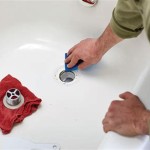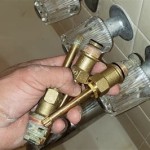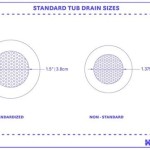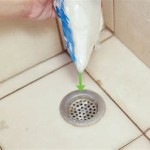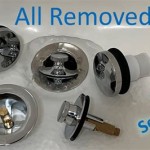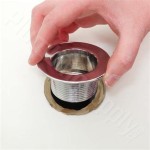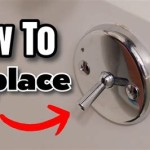Extra Large Bathtubs: An In-Depth Look at Costs
The desire for luxurious bathing experiences has fueled a growing interest in extra large bathtubs. These oversized tubs offer ample space for relaxation, therapeutic treatments, and shared bathing. However, the enhanced bathing experience comes with a potentially significant price tag. Understanding the factors that influence the cost of extra large bathtubs is crucial for informed decision-making.
Extra large bathtubs, generally defined as those exceeding standard dimensions (typically 60 inches long and 30 inches wide), vary considerably in size, shape, material, and features. These variations directly impact the overall cost, ranging from relatively affordable to exceedingly expensive. This article explores the key factors that determine the price of an extra large bathtub, offering a comprehensive guide for prospective buyers.
Factors Influencing the Cost of Extra Large Bathtubs
The cost of an extra large bathtub is not simply a matter of its dimensions. Several factors contribute to the final price, including the material used in its construction, the design and features incorporated, the installation complexities, and the brand reputation. Each of these elements plays a significant role in determining the overall investment required for acquiring and installing a larger-than-average bathtub.
Firstly, material choice significantly impacts the price. Acrylic, fiberglass, cast iron, copper, stone resin, and even wood can be used in bathtub construction. Each material possesses unique properties that affect durability, heat retention, weight, and aesthetic appeal, all of which contribute to the cost.
Secondly, the design and features contribute to the final price. A simple rectangular soaking tub will inherently cost less than a jetted whirlpool tub or a freestanding model with custom detailing. Features like chromatherapy lighting, integrated heating systems, and built-in sound systems further elevate the cost.
Thirdly, installation complexity plays a crucial role. Replacing an existing standard-sized tub with an extra large model often requires significant modifications to the bathroom structure, plumbing, and electrical systems. This can substantially increase the overall cost of the project.
Finally, brand reputation and market positioning also influence pricing. Well-established brands with a reputation for quality and innovation often command higher prices than lesser-known manufacturers. The perceived value associated with a particular brand name contributes to the consumer's willingness to pay a premium.
Material Costs and Their Impact
The material used in the construction of an extra large bathtub is a primary driver of its cost. Different materials offer varying degrees of durability, heat retention, aesthetic appeal, and weight, all of which influence the final price. Understanding the characteristics of each material is essential for making an informed purchasing decision.
Acrylic: Acrylic bathtubs are a popular choice due to their affordability and versatility. Acrylic is a lightweight and relatively inexpensive material that can be molded into various shapes and sizes. These tubs generally offer good heat retention and are resistant to chipping and cracking. The cost of an extra large acrylic bathtub typically ranges from $800 to $3,000, depending on the size and features.
Fiberglass: Fiberglass bathtubs are even more budget-friendly than acrylic models. However, they are less durable and prone to scratching and fading over time. Fiberglass tubs offer limited heat retention and can feel less luxurious compared to other materials. Extra large fiberglass bathtubs usually cost between $500 and $2,000.
Cast Iron: Cast iron bathtubs are renowned for their exceptional durability and heat retention. These tubs are made by pouring molten iron into a mold and then coating it with a layer of enamel. Cast iron tubs are heavy and require substantial structural support, which adds to the installation cost. The cost of an extra large cast iron bathtub can range from $2,000 to $8,000 or more.
Copper: Copper bathtubs are a luxurious and visually stunning option. Copper is a naturally antibacterial material that offers excellent heat retention. These tubs are often handcrafted and can be customized to fit specific design preferences. Extra large copper bathtubs are among the most expensive, typically costing between $5,000 and $20,000 or more.
Stone Resin: Stone resin bathtubs are made from a blend of crushed stone and resin. This material offers a smooth, non-porous surface that is resistant to staining and scratching. Stone resin tubs offer good heat retention and a modern, elegant aesthetic. The cost of an extra large stone resin bathtub ranges from $3,000 to $10,000.
Wood: While less common, wood bathtubs offer a unique and natural aesthetic. These tubs are typically made from cedar, teak, or other water-resistant woods. Wood bathtubs require special care and maintenance to prevent water damage and cracking. Extra large wood bathtubs can range in price from $4,000 to $15,000.
Design Features and Their Price Implications
Beyond the material composition, the design and features of an extra large bathtub significantly impact its cost. A standard soaking tub offers a basic bathing experience, while more advanced models incorporate features like jets, lighting, and heating systems to enhance relaxation and therapeutic benefits.
Soaking Tubs: Soaking tubs are the simplest and most affordable type of bathtub. These tubs are designed for relaxation and feature a deep basin for immersion. Extra large soaking tubs typically cost between $800 and $5,000, depending on the material and size.
Whirlpool Tubs: Whirlpool tubs feature jets that circulate water to provide a massaging effect. These tubs are designed to relieve muscle tension and promote relaxation. Whirlpool tubs require electrical connections for the jets and pumps, which adds to the installation cost. Extra large whirlpool tubs can range in price from $2,000 to $10,000 or more.
Air Tubs: Air tubs feature jets that release bubbles into the water, creating a gentle and soothing massage. Air tubs are quieter than whirlpool tubs and offer a different type of massage experience. Extra large air tubs typically cost between $3,000 and $12,000.
Freestanding Tubs: Freestanding tubs are designed to stand independently from the walls, creating a focal point in the bathroom. These tubs are available in various shapes and sizes and can be made from different materials. Freestanding tubs require additional plumbing and installation considerations. Extra large freestanding tubs can range in price from $1,500 to $15,000 or more.
Walk-In Tubs: Walk-in tubs are designed for individuals with mobility issues. These tubs feature a watertight door that allows easy entry and exit. Walk-in tubs often include features like built-in seats and grab bars for added safety. Extra large walk-in tubs can be significantly more expensive, ranging from $5,000 to $20,000 or more, including installation.
Additional Features: Other features that can increase the cost of an extra large bathtub include chromatherapy lighting (color-changing lights), integrated heating systems (to maintain water temperature), built-in sound systems, and custom finishes. These features enhance the bathing experience but also add to the overall price.
Installation Costs and Considerations
The cost of installing an extra large bathtub can be a significant factor, especially when replacing an existing standard-sized tub. The installation process may involve modifications to the bathroom structure, plumbing, and electrical systems. Understanding the potential installation costs is essential for budgeting purposes.
Structural Modifications: Installing an extra large bathtub often requires reinforcing the floor to support the added weight. This is particularly important for cast iron and stone resin tubs. The cost of structural modifications can range from $500 to $3,000 or more, depending on the extent of the work required.
Plumbing Modifications: Installing an extra large bathtub may require relocating the drain, water supply lines, and overflow drain. This can involve cutting into walls and floors, which adds to the labor costs. The cost of plumbing modifications can range from $300 to $1,500 or more.
Electrical Modifications: If the extra large bathtub includes features like jets, lights, or heating systems, electrical modifications may be necessary to provide power to these components. The cost of electrical modifications can range from $200 to $800 or more.
Labor Costs: The cost of labor for installing an extra large bathtub can vary depending on the complexity of the project and the experience of the plumber or contractor. Labor costs typically range from $500 to $2,000 or more.
Removal and Disposal: The cost of removing and disposing of the old bathtub can also add to the overall expense. This can involve dismantling the old tub and hauling it away. Removal and disposal costs typically range from $100 to $500.
In conclusion, the cost of an extra large bathtub is a complex equation influenced by multiple factors. Careful consideration of material choices, design features, installation requirements, and brand reputation is crucial for making an informed decision and achieving the desired bathing experience within a realistic budget.

Extra Large Bathtubs Redefined

Extra Large Bathtubs Redefined
.jpg?strip=all)
Extra Large Bathtubs Redefined
.jpg?strip=all)
Extra Large Bathtubs Redefined
.jpg?strip=all)
Extra Large Bathtubs Redefined
-(web).jpg?strip=all)
Extra Large Bathtubs Redefined

Extra Large Bathtubs Redefined
.jpg?strip=all)
Extra Large Bathtubs Redefined
.jpg?strip=all)
Extra Large Bathtubs Redefined

Onyx Natural Stone Bathtub
Related Posts

